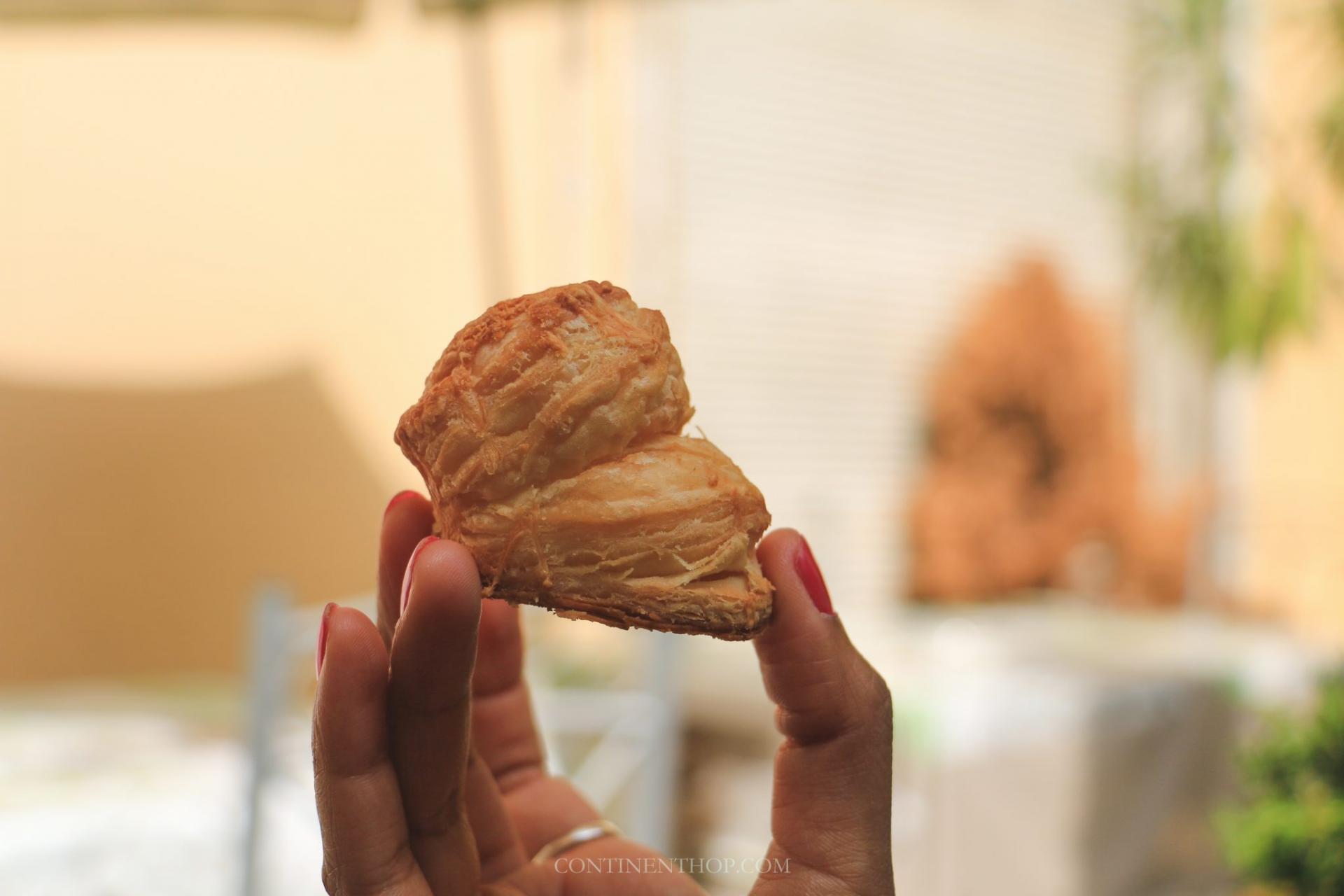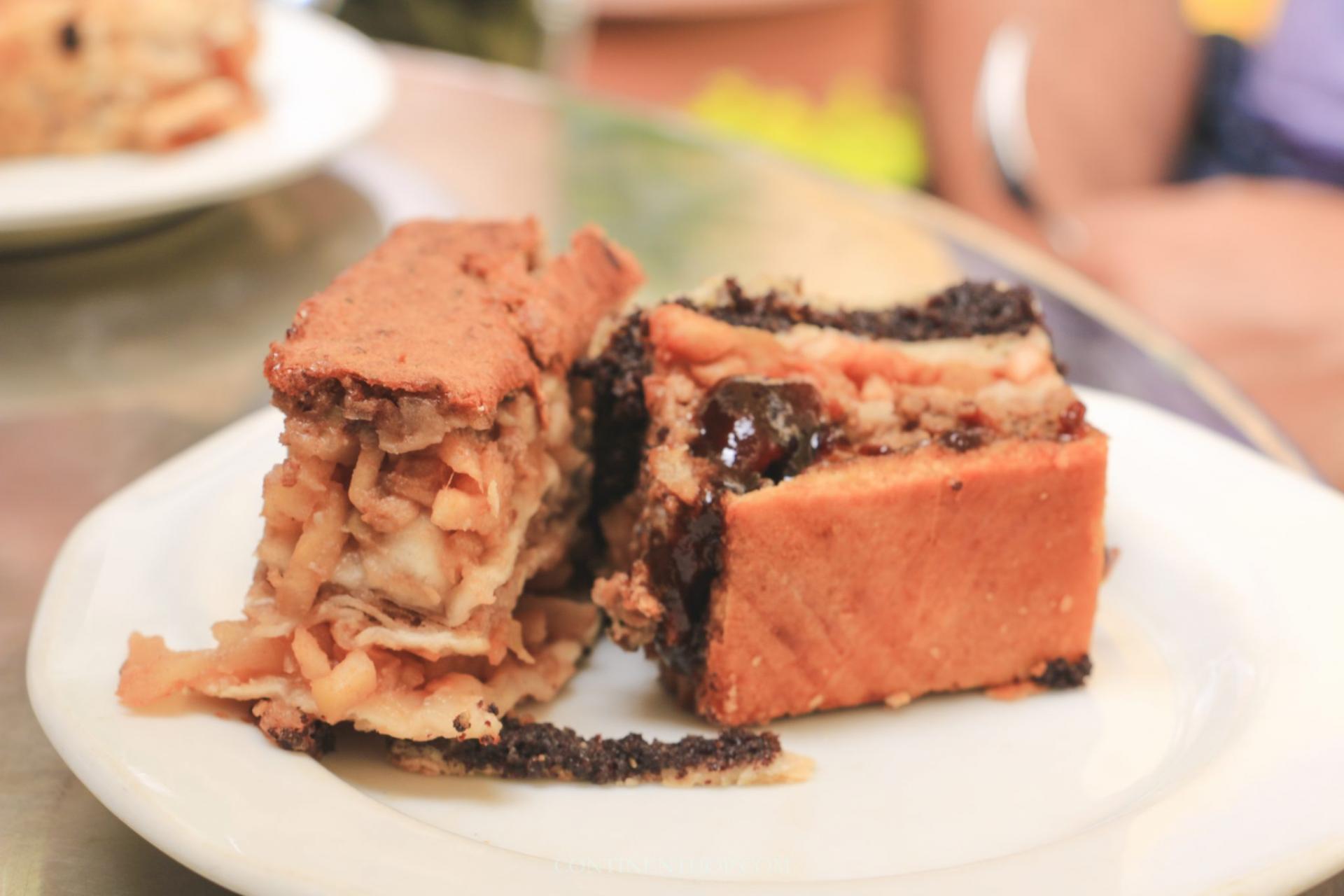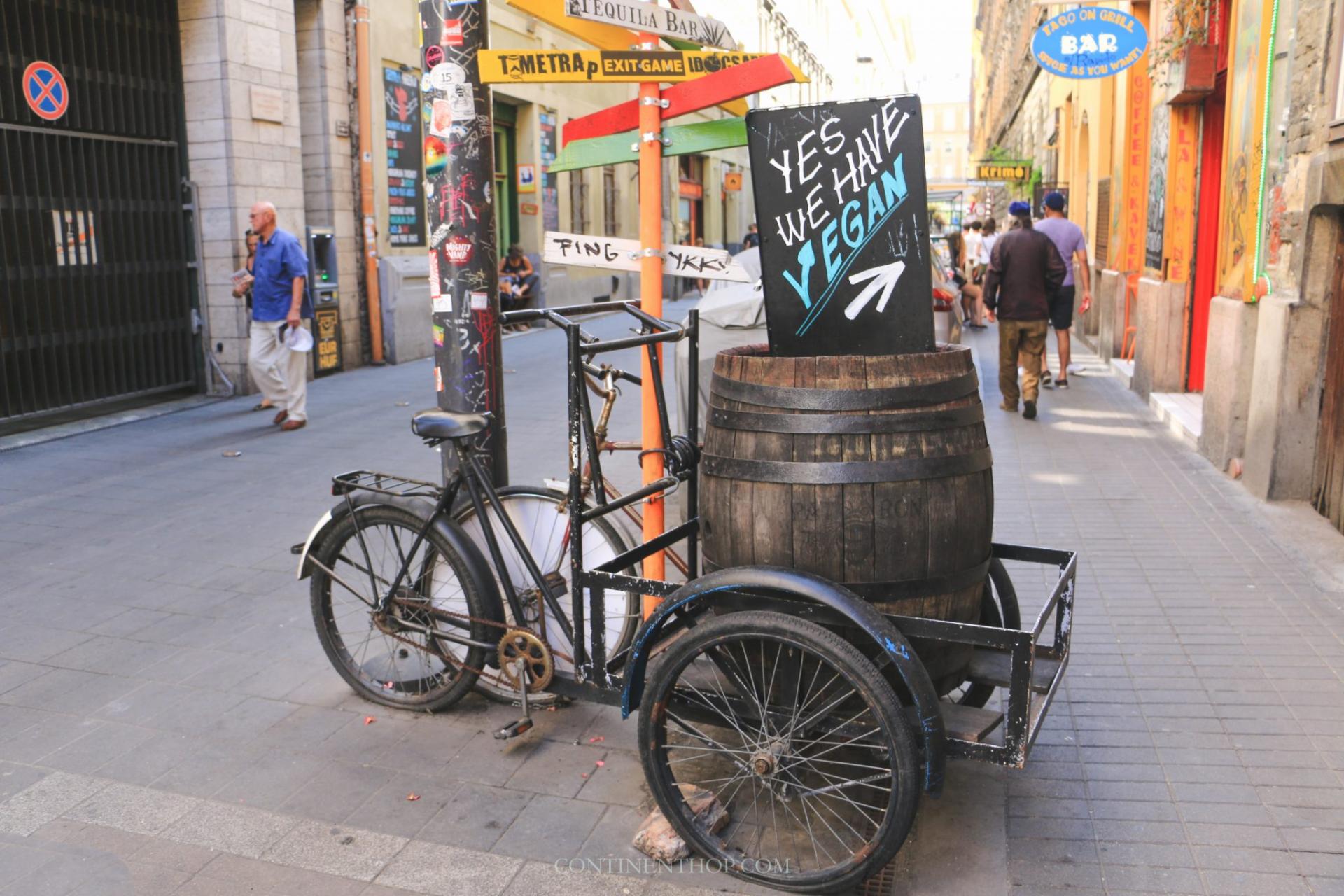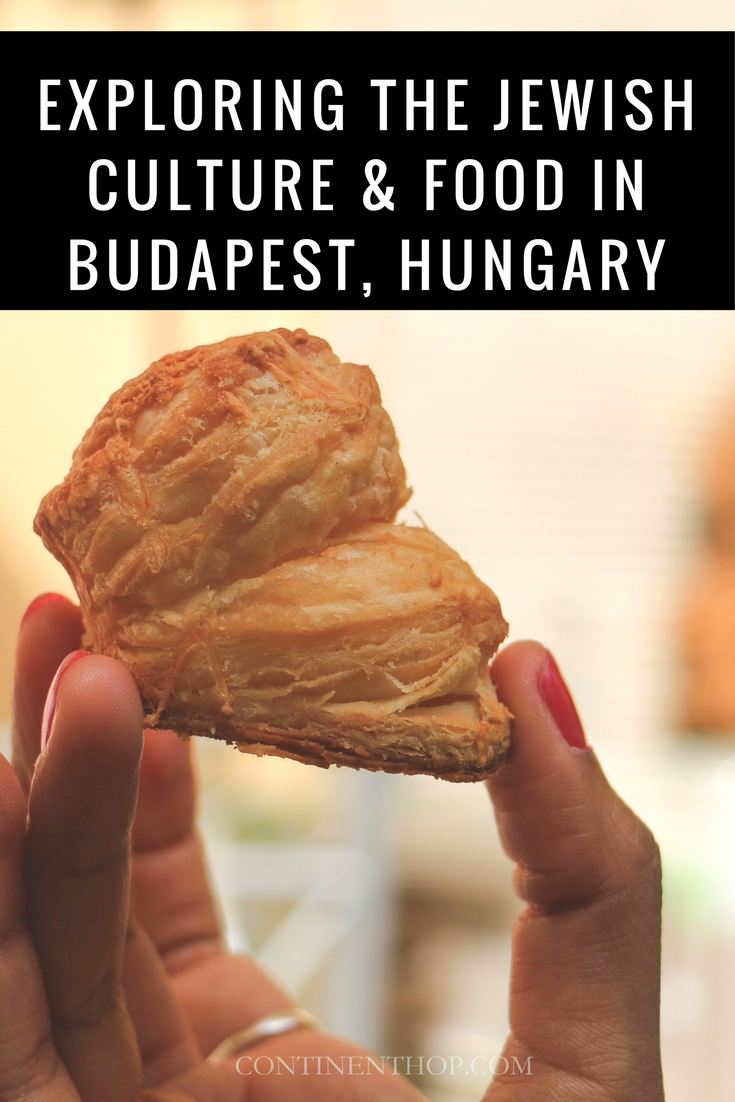Apprx. Reading Time: 4 minutes

traditional Hungarian jewish food
It’s easy to associate politics with people, what is difficult though is trying to connect with people by keeping their beliefs and religion at bay. When I visited Israel earlier this year the people there swept me off my feet with their fun, carefree and friendly attitude and the food helped me add a few pounds too! As vibrant as Budapest is, an interesting element to note is that the 7th District in Budapest is the most unique locality of the city known for its funky ruin bars, quirky street art, offbeat cafes and the biggest Synagogue in Europe- The Dohány Street Synagogue. Jews were treated relatively better before WWII in Hungary than most other European countries and were probably the last to be targeted during the war. This in addition to the fact that Theodor Herzl, the ‘Father of Israel’ was born in Budapest is another factor contributing to the neighbourhood having the largest Jewish community in Europe before WWII.
Jewish-Hungarian food as it stands today

traditional Hungarian jewish food

traditional Hungarian jewish food

traditional Hungarian jewish food

traditional Hungarian jewish food

traditional Hungarian jewish food
We meet with Andrew, our guide for the traditional Hungarian-Jewish food tour by Taste Hungary near the plaque erected in Herzl’s honour near the Synagogue (making a mental note to visit it later) and head to get a cup of coffee with the group. Andrew talks about how Budapest has one of the most complex histories in Europe. Getting to know the culinary scene requires delving deeper into the history of the area and how things came to be. The invasion by the Mongols, Turks and the Communist rule led to the community and the foodie scene here becoming quite intricate. Continuing to sip on our coffee we proceed to a bakery to get some snacks and our first taste of Traditional Jewish-Hungarian cuisine. Andrew leads us through the bakery to the tiny garden at the back where a table is specially set for us. The owner is the daughter of a Rabbi who wanted to be a designer, however, got involved in the family business and is now a popular cake designer! She gets us some warm Pogásca’s – light and airy made from flour, yeast, eggs, butter and cream and topped with a sprinkling of cheese. They’re savoury, bite-sized fluffy bits however you could have variations with toppings of Töpörtyű (pork cracklings) or even sweet ones. As the saying goes if you want to eat good Flódni, you’ll have to visit Hungary, so there’s also Flódni on the table – fillings of apple, walnut, plum jam and poppy seed filled between 5 layers of cake. The dough was originally made with goose fat keeping kosher eating rules in mind however over time non-Jewish bakeries also incorporated Flódni on their shelves, replacing goose fat with butter. Each of the layers is rich and moist and the ingredients in each layer have their own importance. The layer of walnuts is for wealth, poppy seeds for a big family; apple for health and the plum jam is put only cause of the abundance of plums in the area! Plums are also used to make Pálinka – a traditional fruit brandy and since we’re on the topic we then move on to Szimpla Kert, one of the most famous ruin bars in the district.
Some spirits too cause why not?

traditional Hungarian jewish food

traditional Hungarian jewish food
We’re offered a choice of Pálinka and Unicum and we opt for Unicum as we had already tried Pálinka on our very first day in Budapest. Unicum in Hungary is produced by the Zwack family and József Zwack was the court physician to the Habsburg Emperor. He had concocted Unicum as a digestive aid by putting together more than 40 herbs. On tasting it, the emperor had exclaimed “Das ist ein Unikum!” – “That’s a unique thing” giving it it’s name. It seemed to have traces of aniseed and liquorice which complemented each other well. After gulping it down and getting a spicy aftertaste, our next stop is the Kazinczy Street Synagogue.
Stepping inside a Synagogue…

traditional Hungarian jewish food

traditional Hungarian jewish food

traditional Hungarian jewish food

traditional Hungarian jewish food

traditional Hungarian jewish food
It’s Moorish and the patterns inside are quite delicate. Surprisingly even though I had visited Israel, I’d never stepped inside a Synagogue before so it feels quite special to me. It’s quiet and peaceful however synagogues aren’t meant to be so. They’re a place to praise and hence could be quite noisy! We learn that the Hungarian Orthodox Jews are quite unique. Somewhere in 1868, the Hungarian Orthodox declared themselves independent of Progressive and Conservative Judaism, as Neo-Orthodoxy – ‘The Torah together with the way of the earth’, which is what a lot of the Jews in Budapest practice today. Next on the itinerary is another traditional Jewish- Hungarian place and here we start off with some wine and Matzo Ball soup with a twist, it’s made in duck broth with a sprinkling of coriander. It’s comforting and tasty and the Matzo ball is how it should be! Accompanied by the soup is Sólet in Hungarian and Cholent in Yiddish, the highlight of the tour. Jewish laws prohibit cooking on Shabbat which is why this dish is a hearty favourite for many. Typically, cholent is prepared with beans, barley, meat and eggs. The dish is prepped and placed in a slow oven by Friday noon before sundown and it keeps simmering, till it is ready to be eaten on Saturday for lunch. Our dish came with a huge roasted goose leg and moderately seasoned beans. The egg was goose egg too. Apparently, Jews were traditionally goose farmers in Hungary which probably explains the use of goose in a lot of dishes. While over time, cholent has seen variations with the toppings, we were given the most traditional version. The meat is flavorful, soft and goes quite well with the beans. The crispy skin takes it up a notch. The portion is huge, enough to serve two people. For a short while, everyone is busy enjoying the food trying to finish off everything on the plate and while many are unsuccessful there’s a surprise waiting for us at the end of the tour: wine-tasting with wines from the famous Tokaji region at the Tasting Table. It’s a short walk and the place is cosy and lit warmly. A huge collection of drinks is on display and without any further delay, we’re brought the world famous ‘Tokay’ wine from the region. While sipping we’re told that not all wine that comes from the region can give itself the label! It undergoes strict quality control checks and only when cleared can it be called so. The wines from this region are known mainly for their sweet variety. What’s special about the grapes used to make these wines is that they’re allowed to ‘noble rot’ first, yes you heard that right! Under the right temperature conditions, grapes grown here develop a fungus and when these are then exposed to drier conditions they get ‘raisined’, making the wine sweet in turn. The Tasting Table has excellent charcuterie boards here paired perfectly with the wine, however, unfortunately, we had a train to catch to Vienna, so had to skip the offer. We thank our hosts and take a quick detour to visit the Dohány Street Synagogue first before catching the train. As promised the synagogue is grand and there’s a number of tours taking place, a lot of chatter while some pray as well. With a full tummy, I couldn’t help feeling grateful for the multi-cultural world we live in as although I was in Budapest, the tour had taken me on a trip down memory lane and introduced me to the vibrant Jewish community in Budapest with ease.
PIN FOR LATER!

traditional Hungarian jewish food
PRACTICAL DETAILS
Traditional Hungarian Jewish Food
-
This tour is meant for members of all community and is an excellent taster of the Jewish community in Budapest
-
You can definitely specify food restrictions via mail and even at the beginning of the tour
-
The tour takes about 4 hours and is carried out at a leisurely pace so its suitable for people from all age groups
-
Group sizes are usually very small
ADDITIONAL READS
Looking to head off to the islands to catch some sun and sea? Why not head to Mykonos? All details here!
We were guests of Taste Hungary, however as always all opinions are our own.
Have you ever been on any alternate tour that was fascinating? I’d love to hear of it!
‘Life’s too busy and so are you! Articles to drive off the blue(s)!’Your e-mail will be kept strictly confidential!

Visited Budapest last spring with my daughter; what a grand trip it was! We too took the Jewish food and culture tour (with Eszter). Thank you for bringing back wonderful memories.
I loved it too! I’m happy you loved the post, made my day! Happy holidays!